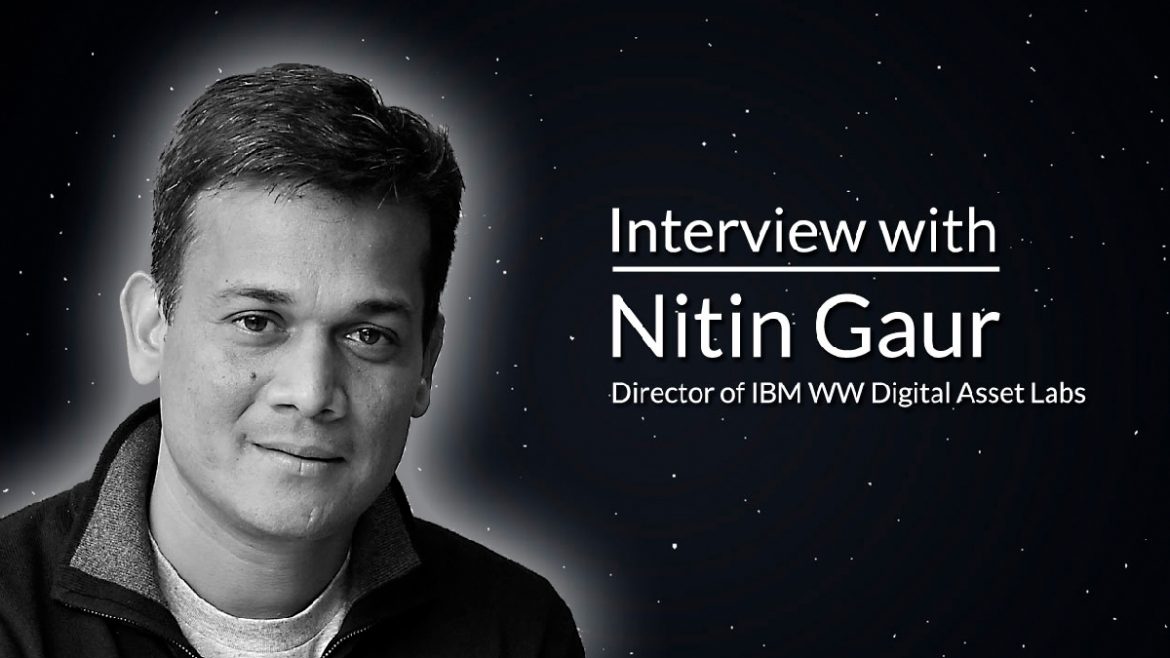Crypto, Trader, News. is proud to present highlights from our interview with Nitin Gaur, the director of IBM Worldwide Digital Asset Labs, who speaks candidly with Dennis H. Lewis about IBM’s blockchain solutions and what we can expect in 2020 and beyond.
Watch the full interview here or directly on our YouTube channel.
Nitin talks about bringing about the notion of digital assets, which is something of value. An analogy might be blockchain is to value as internet is to information. Moving asset tokenization to a form that is understood. For example, taking a physical item and making a digital manifestation or taking the concept of dematerialized assets, which are the contracts like mortgage-backed securities and commodity contracts.
How Digital Assets Lab can help IBM stay competitive in the market
Clients have often asked Nitin why he’s moving in the direction of blockchain. You can see his response at [Timestamp 6:00].
- The core business of IBM has been to build transactions systems from its inception; from early mainframe to middleware to cloud systems. Blockchain, at its root, was made for transaction systems.
- Technical components inside of blockchain like cryptography and quantum computing will help IBM stay competitive and relevant in the market for decades, if not hundreds of years.
Some of the relevant enterprises that blockchain can streamline
Supply chain can help track each item from raw sources to grave. For example, food safety: to track the germination of seeds, to its growth environment, to transportation and distribution, to ultimately the consumer purchase.Moving from speculation to solving real world problems
[Timestamp 10:10]Nitin explains why he began his journey and how it’s important to proliferate between the good and bad information that’s available; using discretion and one’s own intelligence to know the difference of what you consume.
From Nitin’s perspective, he speaks about building the framework today for the transactions and business models that do not exist yet. When the mainstream truly begins to understand the potential behind blockchain, he believes that this could lead to a new wave of innovation and creativity through democratizing one’s own talent, creating a global marketplace for that talent in a frictionless atmosphere.
Understanding Hyperledger
[Timestamp 20:00]Nitin Gaur explains that Hyperledger is a project for the next foundation with approximately 13 or more tools and frameworks in development. This is to help tackle the current issues of blockchain like speed and scalability. Right now, it’s the building blocks to creating a technology framework and infrastructure that’s needed for applications that are yet to come.
How do we get to where we are to where we want to be?
[Timestamp 25:20]Gaur states that “like many of the evolutions and revolutions...things that we have learned to do like going and making our bookings online and Uber; there’s no going back from it.” Now that the behavior has changed in how we consume goods and products, he doesn’t subscribe to a complete maximalist belief. People will, most likely, stay with centralized authorities, but this movement is necessary in order to evolve and do things better.
How do we get mass adoption?
[Timestamp 27:40]The answer is that blockchain should be “invisible tech.” Nitin explains that the majority of people don’t really care what a TCP/IP or an IP schema is, or the amount of tech involved that keeps the internet operating. So too, blockchain will exist invisibly to make enterprise transactions work.
2020 Predictions
[Timestamp 30:25]Nitin believes that a lot of the hype will fade away. The phase of ICO/STO/IEOs are not as prevalent as developers settle into creating use cases to normalize the blockchain stack.
